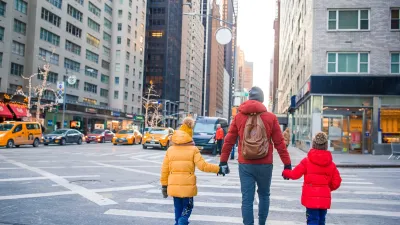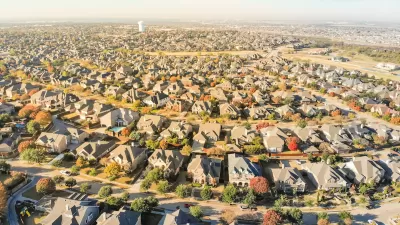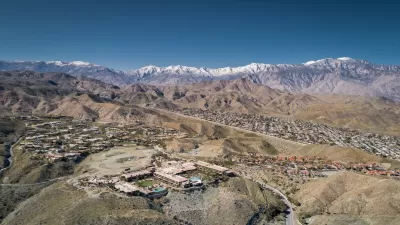Santa is sounding the alarm: "Christmas is in jeopardy.” What's making St. Nick a little less jolly this year? New analysis shows that suburban development patterns are driving up costs at the North Pole, say Paul Knight and Kevin Clark.
According to analysis conducted by the North Pole Research and Development organization, and announced at an emergency meeting at the United Nations, the work of Santa and his support staff is being stymied by the inefficiencies of suburban growth patterns.
"Before the 1950’s, Americans typically lived in either urban or rural environs. This pattern allowed Santa and his staff to organize a two-pronged Christmas Eve flight: the first prong took place in cities and the second prong took place between cities. In cities both large and small Santa had access to a large number of chimneys within a short amount of time. The R&D group referred to this measure as the “Cookies per Acre” ratio (a term Santa, until today, preferred to keep a secret, especially from Mrs. Claus). With these cities spaced by large swaths of agriculture, Santa could nap between the higher-density areas and put the sleigh on auto-pilot," explain Knight and Clark.
"Now, after decades of suburban growth, Santa and his operation is on the verge of total collapse according to the R&D group. As Santa spoke to a shocked assembly, he explained, in a not-so-jolly way, that suburban sprawl has been devastating to his Christmas Eve flight efficiency. He noted a number of challenges he finds in the suburbs ranging from the poor neighborhood layouts and total lack of connected street networks to the issue of not being able to tell one house apart from another."
Before concluding the meeting Santa implored the world's leaders to ensure more compact development - for the sake of the children. “Insist that your government officials enact regulations to support mixed-use communities with small, connected blocks,” Santa said. “This is the only way I can hope to continue my Christmas operation in the future.”
FULL STORY: A Holiday Message From Santa: “No More Suburbs!”

Planetizen Federal Action Tracker
A weekly monitor of how Trump’s orders and actions are impacting planners and planning in America.

Maui's Vacation Rental Debate Turns Ugly
Verbal attacks, misinformation campaigns and fistfights plague a high-stakes debate to convert thousands of vacation rentals into long-term housing.

Restaurant Patios Were a Pandemic Win — Why Were They so Hard to Keep?
Social distancing requirements and changes in travel patterns prompted cities to pilot new uses for street and sidewalk space. Then it got complicated.

In California Battle of Housing vs. Environment, Housing Just Won
A new state law significantly limits the power of CEQA, an environmental review law that served as a powerful tool for blocking new development.

Boulder Eliminates Parking Minimums Citywide
Officials estimate the cost of building a single underground parking space at up to $100,000.

Orange County, Florida Adopts Largest US “Sprawl Repair” Code
The ‘Orange Code’ seeks to rectify decades of sprawl-inducing, car-oriented development.
Urban Design for Planners 1: Software Tools
This six-course series explores essential urban design concepts using open source software and equips planners with the tools they need to participate fully in the urban design process.
Planning for Universal Design
Learn the tools for implementing Universal Design in planning regulations.
Heyer Gruel & Associates PA
JM Goldson LLC
Custer County Colorado
City of Camden Redevelopment Agency
City of Astoria
Transportation Research & Education Center (TREC) at Portland State University
Jefferson Parish Government
Camden Redevelopment Agency
City of Claremont





























